Free Influencer Marketing Series
Success! Enjoy the series Part 1: How an agency took a brand from 0 to $1MM in 4 months using influencers & ads
Free Influencer Marketing Series
Success! Enjoy the series Part 1: How an agency took a brand from 0 to $1MM in 4 months using influencers & ads
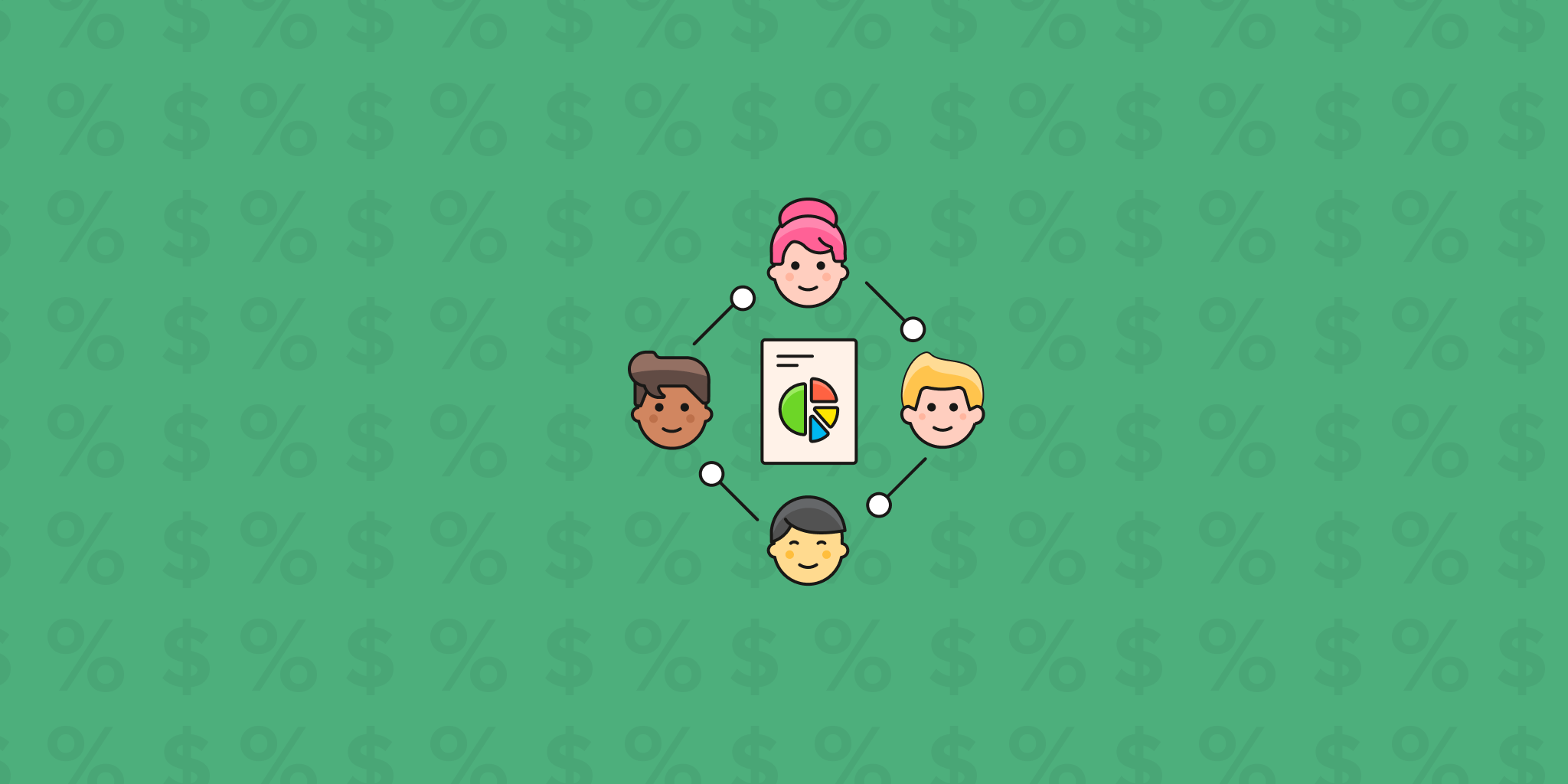
There are many reasons why influencer marketing is a staple for brands. The growing consumer demand for authentic, relatable content, the ability to reach a wider audience, and the sheer number of success stories are just a few.
And, while 70% of brands measure the ROI (Return on Investment) of their influencer marketing campaigns, there’s still one big looming question: what’s the best way to measure influencer marketing ROI?
Is it enough to check sales coming from these campaigns? Or should you look at factors like brand lift and engagement too? And how do you measure the return on UGC (user-generated content), the number one objective for influencer marketing campaigns in 2024, according to Influencer Marketing Hub.
Running a business requires making decisions to get the most return from your spending—should I invest in influencer marketing or am I better off investing that money in refining my content strategy or paid ad campaigns?
While we believe influencer marketing is absolutely worth it, here are some statistics that strengthen our case.
Businesses make $6.50 for every $1 spent on influencer marketing, with the top 13% of businesses achieving an ROI of $20 for every $1 spent, or more.
According to a report, 56% of people purchase a product after seeing an influencer use it.
69% of survey respondents trust a friend, family member, or an influencer recommendation over one that comes from a brand.
This shows that people trust influencers, and an influencer marketing strategy can get you great returns if done well.
The way you calculate your influencer marketing ROI will depend on your goal. Here’s a roundup of four common goals and how you can track the ROI for each.
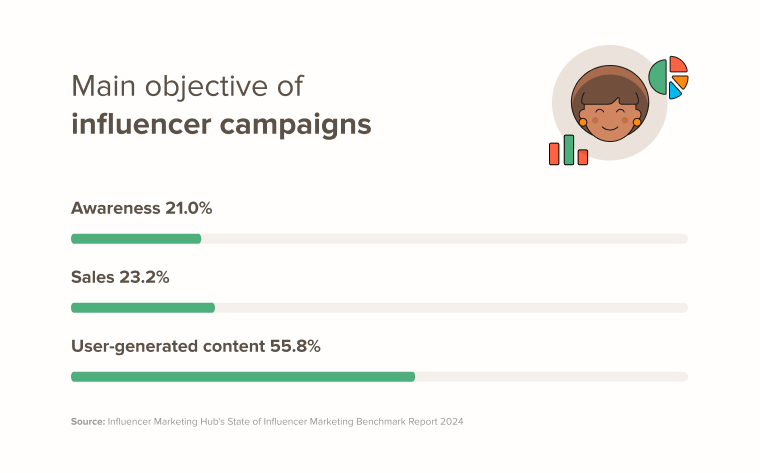
Many businesses run influencer campaigns for an uptick in immediate sales, such as a campaign to increase an e-commerce store’s sales during the holidays.
To track and attribute these sales to the right influencers, you can use promo codes and special UTM links.
One way to calculate this ROI is via this formula:
ROI = (Total sales - Total costs) / Total Costs X 100
The costs should include your influencers' fees, product sample costs, product shipping costs, content production costs, and platform fees.
You can also track metrics like average order value (AOV), lifetime value (LTV) and customer acquisition cost (CAC) to see the impact of influencer marketing.
For example, did it result in a lower CAC than other channels like third-party affiliations or branded promotions? Or are the customers you get from influencer marketing more valuable long-term than those that come from ads?
If you’re a startup or competing in niche markets, you might choose brand awareness as your objective.
For example, the sustainable woolen clothing market is smaller in comparison to the wider fashion industry, but there are a lot of brands vying for attention in this small segment of the market.
To ensure you successfully evoke brand recall during crucial purchasing decisions, it’s important to invest in (and monitor) brand awareness.
To track ROI for this case, you need to look at metrics like:
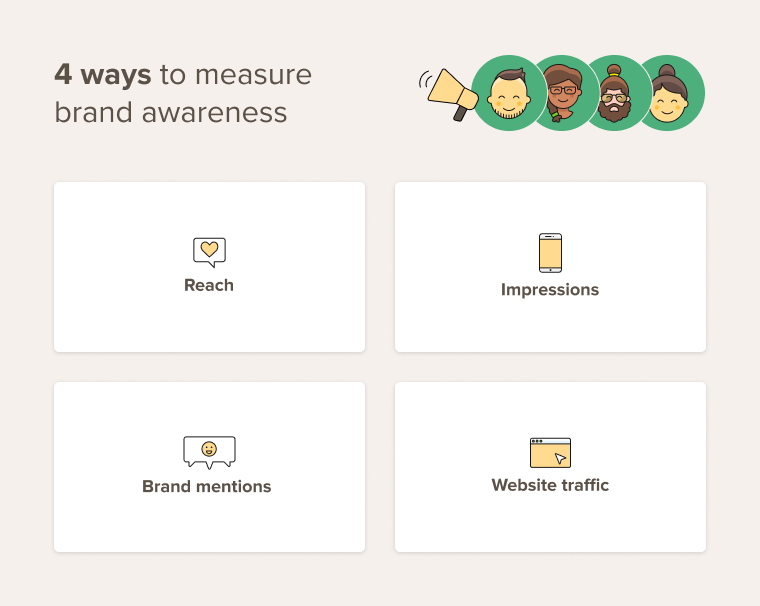
-Reach and impressions: How many individuals saw your content? How many times have these users seen your content?
-Brand mentions: How many times has your brand been mentioned on social media? Social listening tools like MightyScout can help you track these brand mentions across social platforms.
-Website traffic: Did you see an increase in website visits? Or an increase in traffic to certain landing pages? You can monitor this with Google Analytics and compare it with your previous traffic data. If you are able to increase traffic to your website or landing pages, but sales are not increasing, then look to optimize your website for conversions.
Think of the brands you engage with. You might feel a connection with them or a strong affinity for the values they share. This brand love can translate into purchase intent in the future, which is why many companies focus on engagement over awareness.
To find the ROI for this goal, measure these metrics:
-Social media engagement: How many numbers of likes, comments, shares, and reposts did your campaign see? Did this result in a follower increase?
-Increase in conversions: Do you see an increase in email subscribers? Or an increase in people who added the product being promoted to their carts?
-Cost per engagement: Do you see a drop in cost per engagement because of the campaign?
TIP: Select influencers with high engagement from the start, if engagement is your objective.
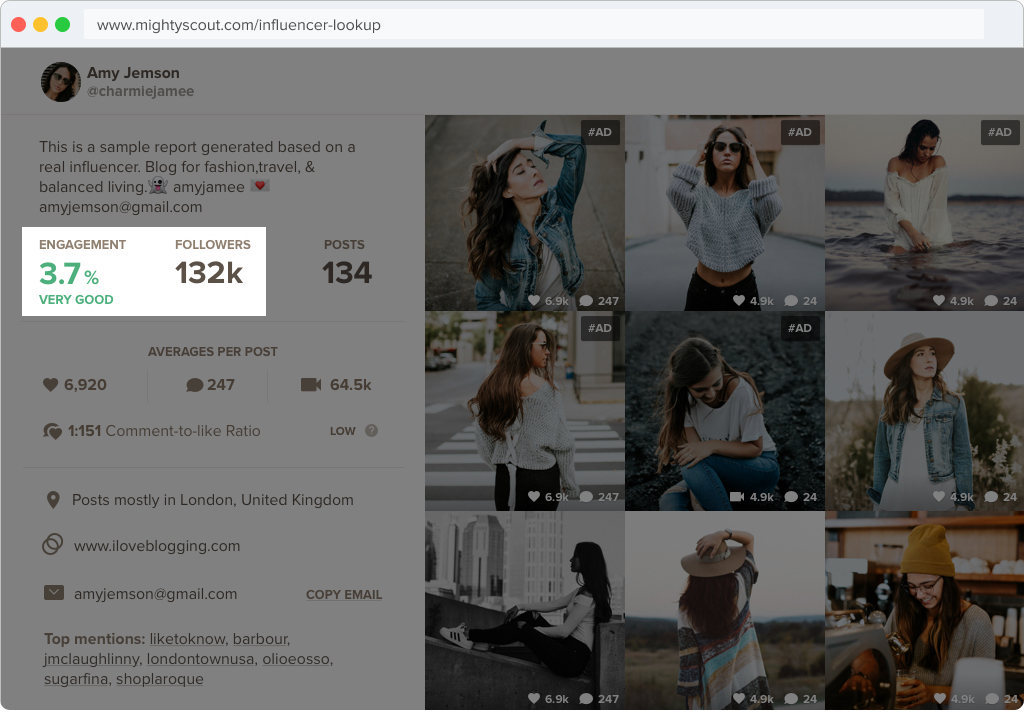
Influencer campaigns bring unique content that connects with a larger audience. For example, this skincare influencer shares her journey and how she used a certain brand’s products to solve skin issues.

This content resonates with people because it’s not just branded content trying to sell something. It shows someone’s real journey.
Many brands have realized this, and they measure the ROI that influencer-generated content can bring to the business.
This involves calculating the cost you would have spent on content production and comparing that to the cost spent on an influencer marketing campaign. Three examples of how influencer content can increase your ROI.
Increase high performing ad creatives affordably
Supergut, a gut health brand, found influencer campaigns to be an affordable way to scale their ad creatives to drive growth affordably using Meta ads.
Eliminate in-house content production to save costs
Kiah Zellner-Smith, of IES Abroad, a study abroad organization, noticed the TikTok content produced by her influencers outperformed the TikTok content she was producing in-house for ads. She changed her strategy to eliminate in-house ad production, freeing up her time for more strategic work.
Replace costly offsite photo shoots with affordable influencer campaigns
A fashion brand for curvy women was able to eliminate costly photography shoots for its ad creatives by working with micro-influencers to produce candid content. When comparing the cost of a photographer, curvy models, and days offsite dedicated to a photoshoot, the brand found using influencers delivered a cost savings.
Influencer marketing costs depend on a lot of variables. These can include: the social media platform you’re targeting, the number of followers and engagement rate of the influencer, the number of posts you’re looking to sponsor, length of the contract, exclusivity rights, content usage rights, agency fees, product gifts, packaging and shipping.
Product seeding campaigns are one way to produce influencer content affordably.
But even if your product is not a fit for seeding, you may offer paid collaborations with influencers. You can find cost estimates for paid collabs using micro-influencers with 10K-50K followers, in this guide by Influencer Marketing Hub:
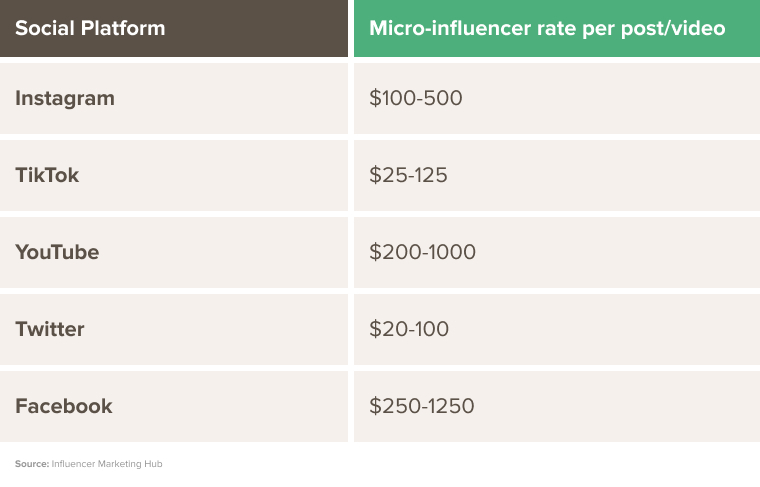
You may have set certain Key Performance Indicators (KPIs) while finalizing your influencer contracts. This could be user-generated content, engagement rate, follower growth, number of orders placed, or increased traffic.
Along with tracking these KPIs and the accompanying ROI, here are a few ways you can measure the success of your influencer marketing campaign:
-Read comments on influencer posts. Do you see the audience replying positively to the post or video? Is there evident purchase intent in the comment section?
-Measure brand lift. This shows whether your campaign shifted audience perceptions around your brand, increased awareness, or boosted customer interactions.
-Utilize influencer analytics platforms like MightyScout. These tools give you an overall idea of how your influencer campaigns have performed without needing to request data from influencers.
-Look for an increase in post-campaign UGC content.
How do brands get good ROI from their influencer campaigns? Here are three examples to inspire your future efforts.
Purdy & Figg, a natural cleaning product manufacturer, teamed up with Kynship for an influencer marketing campaign. The goal was to generate authentic and creative influencer content.
Almost 1000 influencers participated in the campaign, leading to the creation of over 4500 unique assets.

After thorough analytics, they also established long-term relationships with the best creators.
The result? An increase in revenue by 5X within the first ten days of January 2023, compared to the same period in 2022. They also managed to grow their TikTok following to 220,000 in just six months.
M&M’s, a chocolate confectionery brand, partnered with 64 influencers to drive an increase in sales on Father’s Day and Mother’s Day.
The influencers created heartwarming content that led to 31 million impressions across social channels.
The brand not only ended up generating a lot of UGC and awareness, but the real impact came in terms of revenue.
There was an increase in sales of Father’s Day gifts by 457% and an increase in Mother’s Day gifts by 67%.

Gymshark started their TikTok journey with a challenge. They announced the “66 Days | Change Your Life campaign”, which asked people to choose a fitness goal and upload the before and after photos after 66 days.
They collaborated with six influencers to make this campaign go viral.

Their hashtag #gymshark66 generated over 193 million views and has dominated the brand’s TikTok campaigns every year since 2019.
Regardless of your approach to calculating your influencer marketing ROI, try to avoid these common mistakes.
-Not setting clear goals: Define what success means for your campaign. This will set the stage for crucial decisions, like the kind of influencers you should find, the content they create, the CTAs to use, the metrics to measure, and the tools you need to collect metrics.
-Ignoring qualitative metrics: Chasing after sales and revenue is good. But you don’t want to ignore hard-to-quantify benefits like increased user-generated content, brand awareness, customer loyalty, engagement, or sentiment.
-Not including costs beyond influencer fees: Don’t overlook additional costs like the shipping charges for sending products to influencers, production costs, or platform fees.
-Attribution errors: To track revenue from creators, you need to have a proper attribution system – creating custom codes for each influencer or using custom links.
-Overspending: It’s tempting to choose influencers with huge followings, but they can often be more expensive. Make sure the return you’re getting is worth the extra costs before you pump lots of money into a campaign.

1. What is a good ROI for influencer marketing? A good ROI for influencer marketing depends on factors like industry, campaign objectives, and growth stage. Generally, marketers typically consider an ROI of 5:1 or more to be good and more than 10:1 to be exceptional.
2. How can you tell if an influencer campaign was valuable? You can measure the ROI and soft metrics like brand lift, engagement, and increase in awareness. You can also use tools to determine how much money you’d spend to produce the same amount of user-generated content, or to create the number of impressions, clicks, or conversions.
3. How can I improve influencer marketing ROI? To improve influencer marketing ROI, focus on strategic planning, influencer selection, audience targeting, content quality, and campaign optimization. You should also optimize your campaigns based on insights gained from campaign analytics. Track the important metrics, and the data will lead you to improvements.
Running an influencer campaign is half the work. Measuring its success and ROI is how you create better campaigns in the future.
Whether your objective is to increase sales, awareness, engagement, or influencer-generated content, measure key metrics for all these goals. Don’t forget to factor in the qualitative variables to understand the actual success of your campaign and tot up all costs involved, from influencer fees to shipping costs and all the little details that are often overlooked.
When you are first starting out with a few influencers, you can track metrics manually. When you start to get overwhelmed by spreadsheets and tracking down influencer content and metrics, you know it’s time to look at automation. MightyScout’s platform is your best bet. Book a personalized demo to learn more.